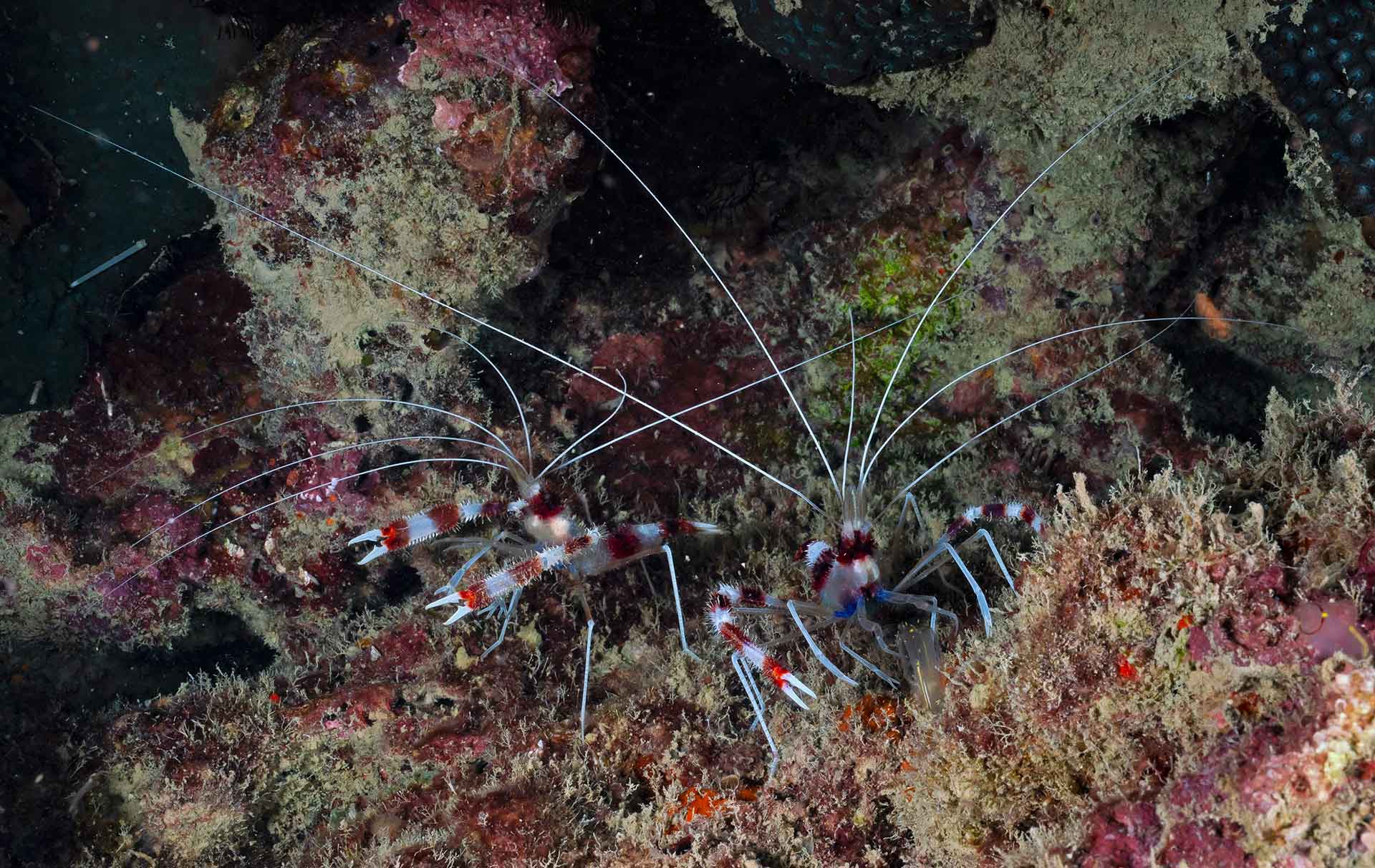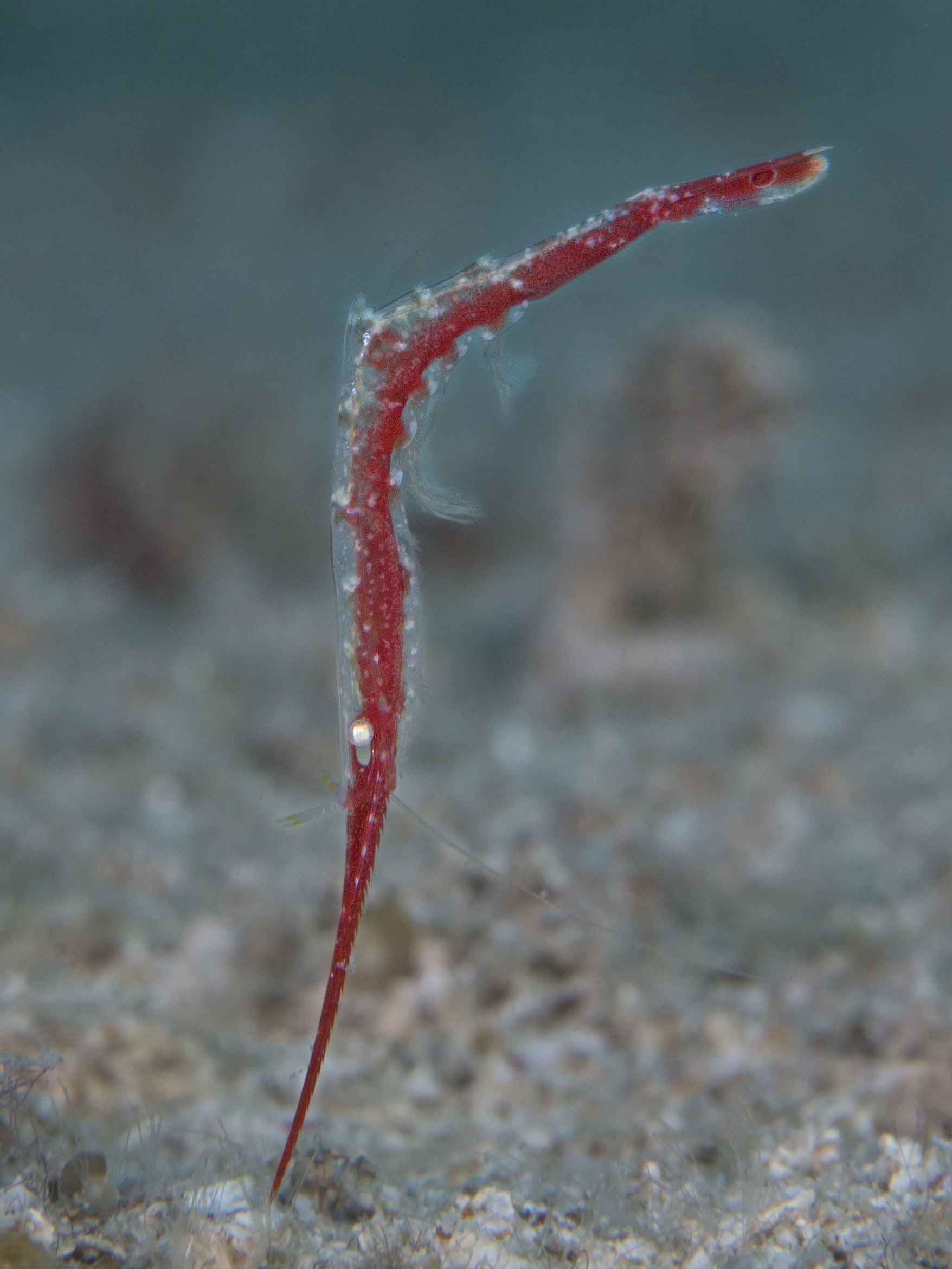As I google search “shrimp”, a news article about “A spicy cashew shrimp recipe with a flavor-bomb sauce” from the Washington Post tops my list. This is followed by a list of seafood restaurants near me. Scrolling further, I get to pages that discuss shrimps as animals; some address questions like “are shrimps fish or insects?” This is the perfect place to begin my story about shrimps, some of the most fantastic and underappreciated animals in the ocean.
Shrimps are perhaps mistaken for insects due to their hard exterior, numerous legs, and antennae-like extensions on the head. Shrimps are crustaceans, a large group of invertebrates that includes others with a crusty exoskeleton, such as lobsters, crayfish, crabs, and barnacles. Shrimps are typically small, some not longer than a human hand, others as big as a matchstick and several best seen under a microscope! Shrimps are decapods, which literally translates to “ten-footed”. They can have up to 36 appendages attached in pairs to each body segment starting from the head.
Across the Indian coast, a variety of shrimps are caught locally and seasonally for consumption. The commercially important shrimps are in the genera Penaeus and Metapenaeus and are primarily caught using bottom trawling.
Before wild shrimps become seafood, they lead very interesting lives. Across numerous habitats and ecosystems, they interact with a host of marine life. With at least 2,000 different species of shrimps identified globally, this group of crustaceans alone contributes significantly to the brilliant diversity of our oceans. Shrimps are vibrant in their looks, vital in their place in the ocean food web, and quite prominent in their role in the marine community — as cleaners, partners, and companions.
Some shrimp species take their relationships with other creatures to the next level. The mutualism between snapping shrimp (Alpheidae) and goby fish (Gobiidae) is a case in point. This should not come as a surprise since the marine world is teeming with examples of cooperation between species, especially between those barely related.

Banded boxer shrimps (Stenopus hispidus) have three pairs of appendages that end in claws to help them eat. Each pair is of a slightly different size and functionality as if providing the shrimp with a variety of fine dining cutlery. The most extravagant of these clawed arms is decorated with red-white bands and held in a boxer’s stance. Banded boxer shrimps specialise in feeding on damaged tissue and parasites that it finds on the bodies of other animals, especially fish. Even though these shrimps do not venture too far from rock crevices, they can attract fish with their large white antennae. These shrimps typically live in pairs and are thought to be monogamous. Photo: Dhritiman Mukherjee Cover photo: An alpheid shrimp takes shelter within the feathery arms of a feather star. Photo: Umeed Mistry
Shrimps are scavengers for the most part and invariably take on the role of cleaning. Being dedicated to the service of keeping other animals disease-free, shrimps will get rid of parasites lodged between the scales, gills, and other body parts their clients trust them with. In return for delicately and thoroughly doing their job, shrimps are rewarded with a constant food supply in the form of parasite-laden visitors at all times of the day and night. Some species like the Pacific cleaner shrimp (Lysmata amboinensis; left) are stationed at fixed locations that client fish like moray eels will remember and visit regularly. Other species of cleaners prefer to live as dedicated commensals, associating with only one or more individual host animals throughout their life. The emperor shrimp (Periclimenes imperator, right) can be found living with sea cucumbers, sea stars, sea urchins, and slugs, among other hosts. Photos: Joydeep Sarkar
Gobies and shrimps prefer to live in sandy areas, specifically burrows, as they offer better protection from predators. Although shrimps are excellent architects with an “eye” for design, their poor vision makes them vulnerable to predation. On the other hand, gobies make perfect bodyguards who look out for the shrimps in exchange for a place to stay. With the goby by its side, always touching at least one of its antennae, the hardworking shrimps can focus on shovelling sand and fortifying the burrow. Burrow maintenance is often a round-the-clock job in an environment of loose sand and strong currents. Shrimps also depend on their partner gobies for food. More specifically, gobies might choose to poop inside their burrows to provide their partner shrimps with nutrition that is otherwise hard to come by. The goby and shrimp partnerships are so effective that sometimes they live in small colonies, one shrimp with multiple gobies or the other way around. Photo: Vardhan Patankar; Video: Sahil Lokhandwala

Cleaner shrimps have an opportunistic diet consisting largely of organic matter flaking off other animals. Choosing either fixed or sedentary hosts offers them a permanent home in whip corals and soft corals (top left and above right) and shelter from predators — like the underside of a cushion star that will rarely see the light of day (above left). The most extraordinary outcome of these associations is the shrimp’s ability to go incognito. Most cleaner shrimps are a challenge to spot because of how well they blend in with their hosts in colour, texture, and behaviour. The whip coral shrimp (Pontonides, top left), sea star shrimp (Periclimenes soror, above left), cleaner shrimp (Caridae, above right), and hydroid shrimps (top right) are a few examples of the incredible coevolution between shrimps and their hosts. Photos: Umeed Mistry (top left, above), Vikas Nairi (top right)
Commensal shrimps can often be seen doing what can only be described as a happy dance! The Durban dancing shrimp (Rhynchocinetes durbanensis; left) moves in a sequence of back-and-forth hops. The squat shrimp (Thor amboinensis; right), very lovingly also called the sexy bum shrimp, wiggles its body up and down to a rhythmic beat. These movements are believed to be signals to animals who may need cleaning. Photo: Samuel John (left), Vikas Nairi (right)

Harlequin shrimps (Hymenocera) are jaw-droppingly beautiful. Blue and pink spots run along on a body of lemon yellow. Their claws and antennae are flattened like the petals of a delicate flower. If you were to guess what a harlequin shrimp did for a living, would voracious predator with a taste for live starfish (and starfish alone) be one of your guesses? Harlequin shrimps are strong, and live and work in pairs. Females are larger than males. Walking around the reef looking for starfish to take back to their dens, harlequin shrimps work tirelessly to incapacitate their five-armed prey — flipping it over and pinning down its numerous independently working arms. Harlequin shrimps use their claws to cut through the tough exterior of starfish until they get to the tube feet. When in trouble, starfish can break off their arms to escape and regrow them later. However, this behaviour is futile when shrimps lock the starfish in a dead-end crevice. When it regrows injured or chewed up tissue, all it will do is provide an endless larder for the harlequin shrimp. Photo: Joydeep Sarkar


Just when you think you have understood all there is to know about shrimps — what they look like and where to look for them — a tozeuma shrimp (Tozeuma lanceoatum) drifting over a featureless sand bed like a speck of debris will take you right back to where you began. Tozeuma shrimps camouflage well with corals, echinoderms, and algae and equally well with inanimate objects. In the absence of immediate shelter to hide, these shrimps still manage to go unseen due to their strikingly nondescript appearance. Photo: Vikas Nairi

Shrimps may be tiny, but they are valuable marine community members. Much of their lives will remain a mystery to us unless we begin to look at them as more than just prey for other animals and seafood for us. Photo: Vikas Nairi